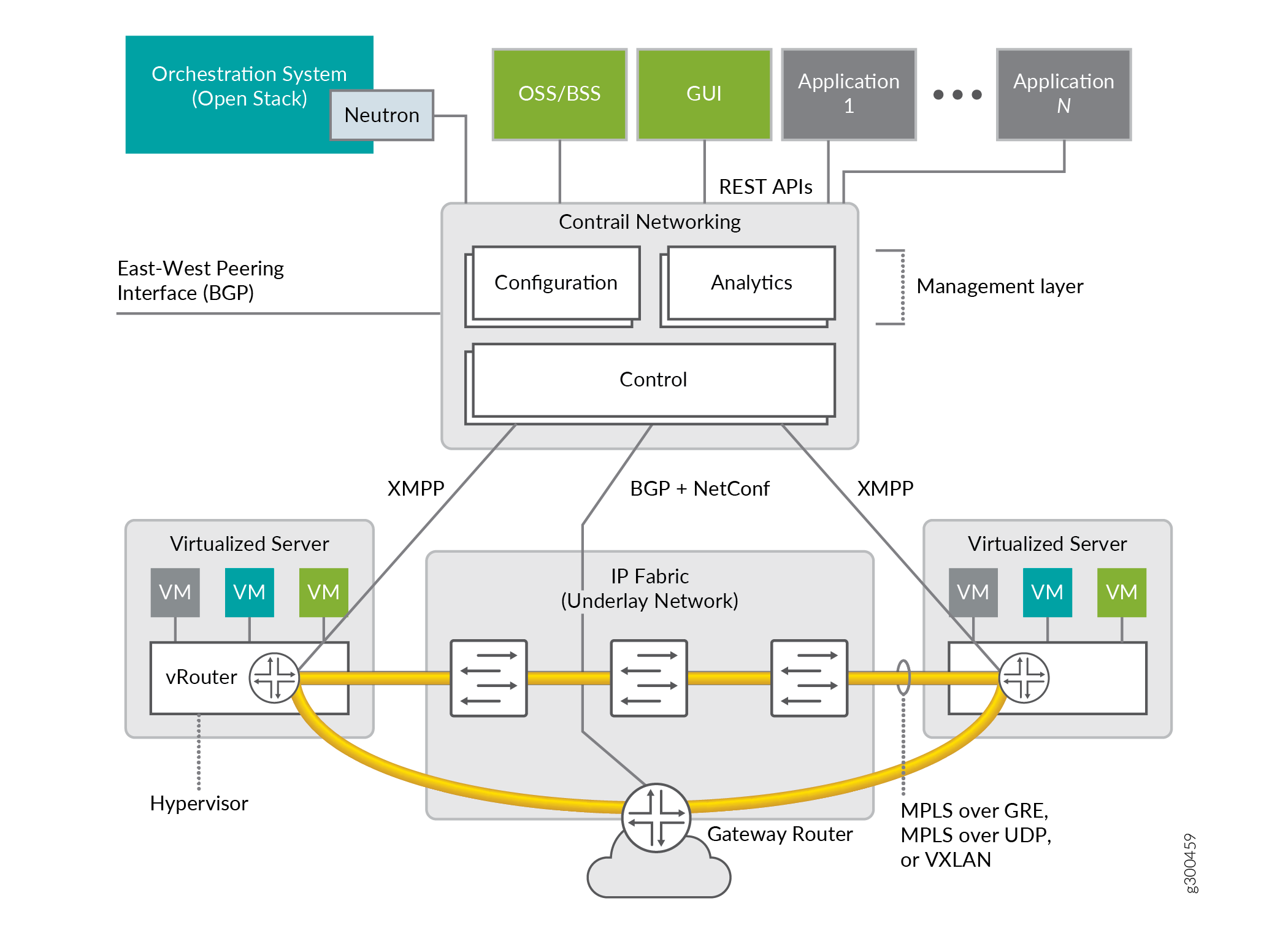Understanding Contrail Networking Components
Contrail Networking is comprised of the following key components:
Contrail Networking management Web GUI and plug-ins integrate with orchestration platforms such as Kubernetes, OpenShift, Mesos, OpenStack, VMware vSphere, and with service provider operations support systems/business support systems (OSS/BSS). Many of these integrations are built, certified, and tested with technology alliances like Red Hat, Mirantis, Canonical, NEC, and more. Contrail Networking sits under such orchestration systems and integrates northbound via published REST APIs. It can be automatically driven through the APIs and integrations, or managed directly using the Web GUI, called Contrail Command GUI.
Contrail Networking control and management system, commonly called the controller, have several functions. Few of the major functions are:
Configuration Nodes—This function accepts requests from the API to provision workflows like adding new virtual networks, new endpoints, and much more. It converts these abstract high-level requests, with optional detail, into low-level directions that map to the internal data model.
Control Nodes—This function maintains a scalable, highly available network model and state by federating with other peer instances of itself. It directs network provisioning for the Contrail Networking vRouters using Extensible Messaging and Presence Protocol (XMPP). It can also exchange network connectivity and state with peer physical routers using open industry-standard MP-BGP which is useful for routing the overlay networks and north-south traffic through a high-performance cloud gateway router.
Analytics Nodes—This function collects, stores, correlates, and analyzes data across network elements. This information, which includes statistics, logs, events, and errors, can be consumed by end-user or network applications through the northbound REST API or Apache Kafka. Through the Web GUI, the data can be analyzed with SQL style queries.
Contrail Networking vRouter runs on the compute nodes of the cloud or NFV infrastructure. It gets network tenancy, VPN, and reachability information from the control function nodes and ensures native Layer 3 services for the Linux host on which it runs or for the containers or virtual machines of that host. Each vRouter is connected to at least two control nodes to optimize system resiliency. The vRouters run in one of two high performance implementations: as a Linux kernel module or as an Intel Data Plane Development Kit (DPDK)-based process.

